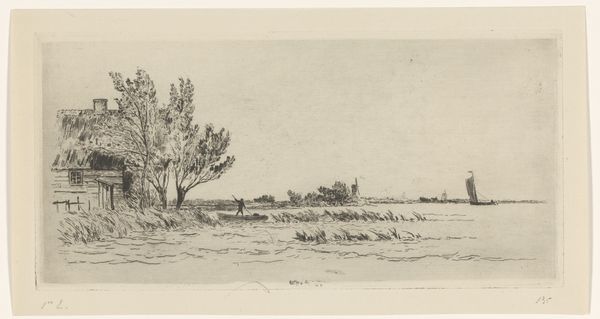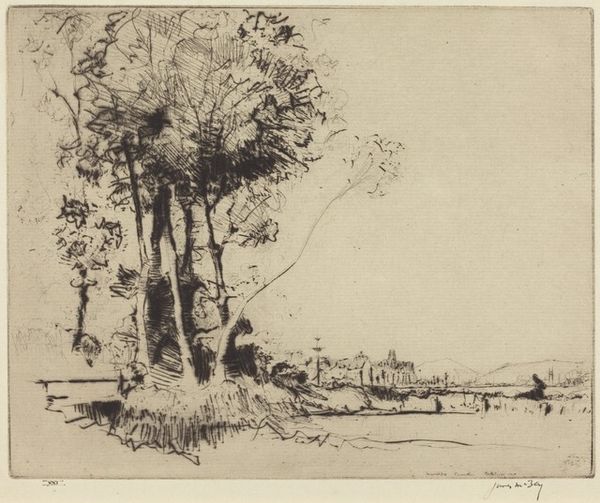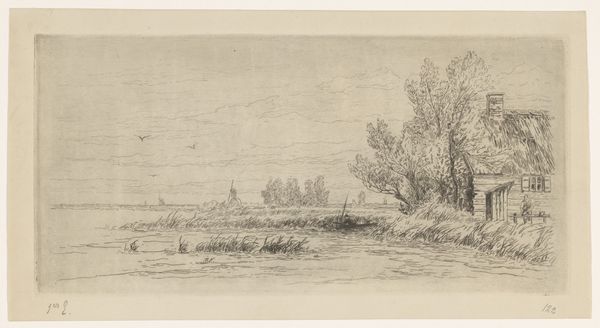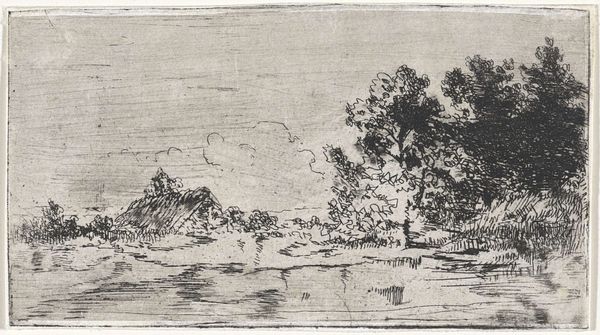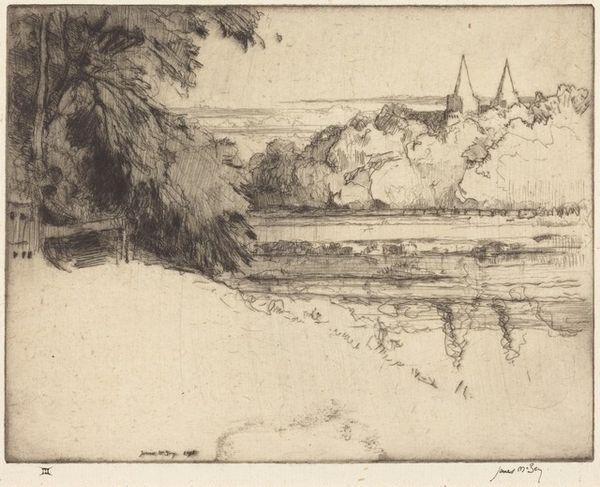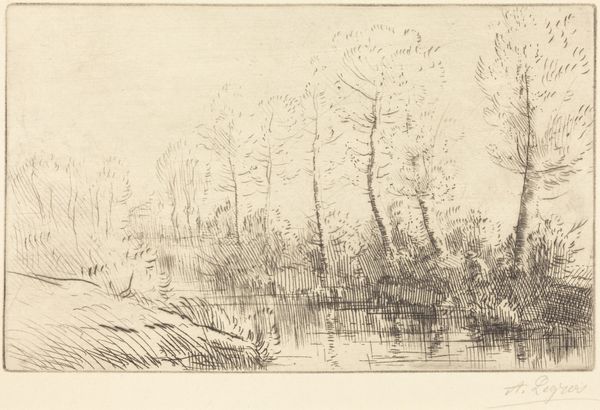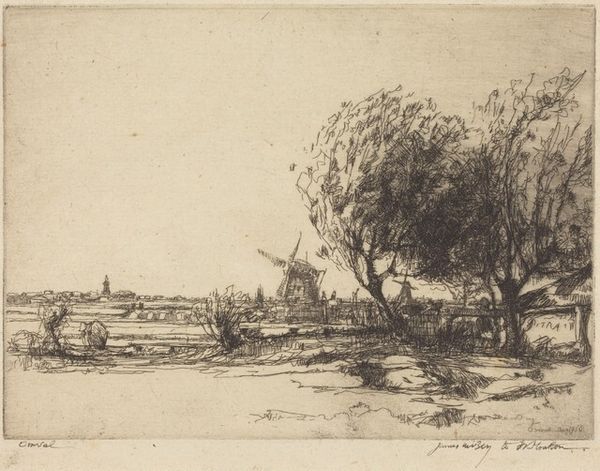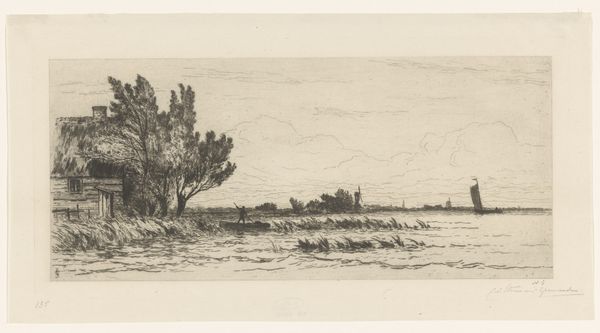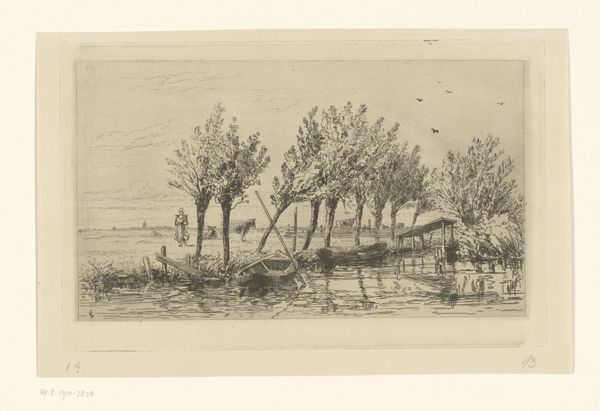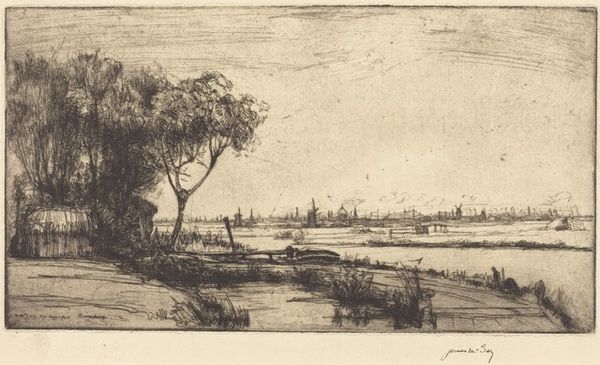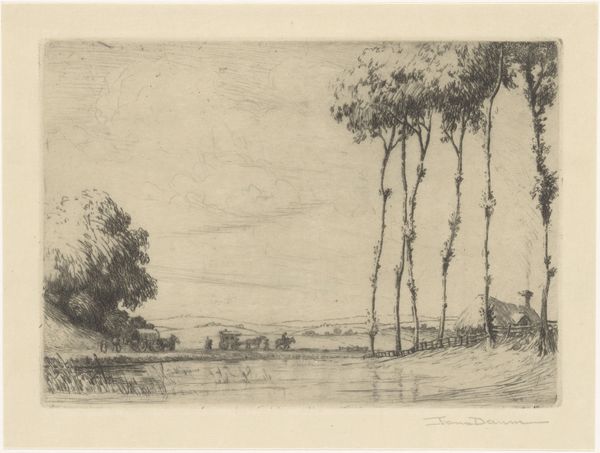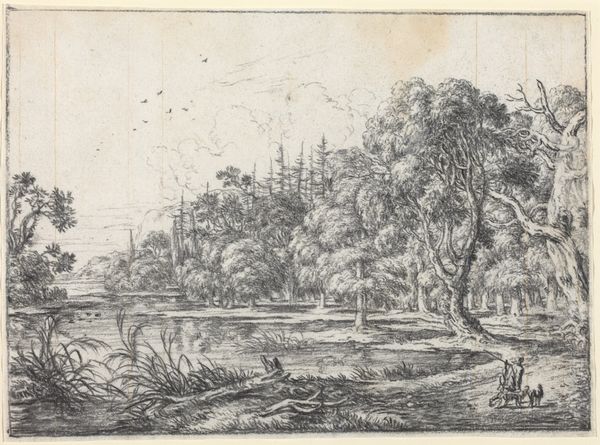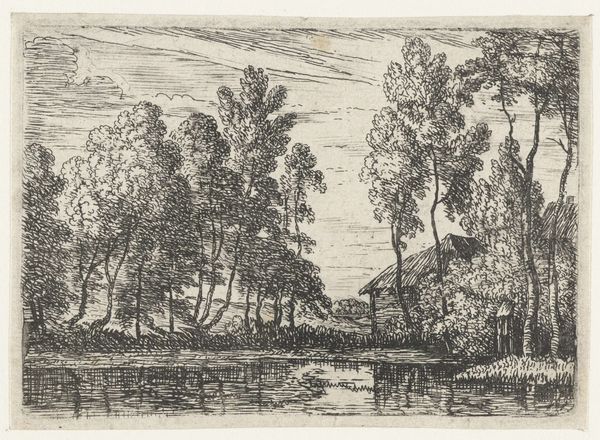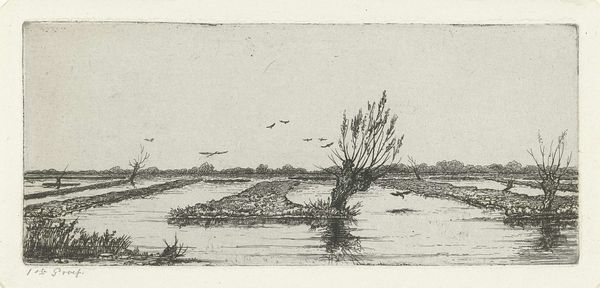
#
quirky sketch
#
mechanical pen drawing
#
pen sketch
#
old engraving style
#
personal sketchbook
#
sketchwork
#
pen-ink sketch
#
pen work
#
sketchbook drawing
#
sketchbook art
Dimensions: height 137 mm, width 214 mm
Copyright: Rijks Museum: Open Domain
Curator: Ah, yes, this is Sir Francis Seymour Haden's "Twickenham aan de Theems," created in 1865. It's currently housed right here in the Rijksmuseum. It's quite the captivating piece, isn’t it? Editor: Absolutely. There's a strange stillness about it. The heavy darkness of the tree on the left against that stark white sky. It’s unsettling. It feels almost… secret. Curator: Secret, I like that! For me, it evokes a sense of quiet contemplation. Look at the reflections in the water – almost mirroring the foliage above. A doubling that amplifies the feeling. The Thames wasn't just a geographical feature; it was central to British identity and colonial power. What did this landscape mean in 1865? Editor: I immediately think about enclosure. These reeds and thickets in the foreground could be seen as obscuring access to resources for common people. How did industrialisation change rural ways of life and contribute to unequal distributions of natural capital? Curator: You always take us to the big questions. While I'm immediately captivated by Haden's technique: the meticulous etching capturing the textures of the flora – almost every blade of grass has its own character. Did his meticulous approach speak to this historical and material violence? Or just appreciation? Editor: I can’t claim to know what was in Haden’s head at the time, but one thing is certain, artistic works are also material facts. What are their conditions of production? Who benefits from art and culture, and at what cost? Those stark contrasts you notice draw attention to social ones as well. Curator: Perhaps. What fascinates me is the raw intimacy – like we've stumbled upon a scene directly from Haden's sketchbook. Editor: Yes, but also think about the power of representing something as “intimate”, as immediate, as personal. Who gets to decide what deserves representation and on what terms? “Intimacy” itself might need questioning as an art category that historically values subjectivity over community or politics. Curator: Well, thank you for twisting my perspective as always, challenging how we experience and contextualize art, and revealing just how multifaceted a seemingly simple etching can be. Editor: And thank you for that grounding in emotional detail. May we remember, with every image, whose voices are included, whose are erased, and how those decisions structure power in this brave new visual world.
Comments
No comments
Be the first to comment and join the conversation on the ultimate creative platform.
